
ver.20221202E
Resonac Corporation (https://www.shodex.com/)
1
Operation Manual
Shodex Asahipak NH2P-50 4B, 4D, 4E
(Please read this operation manual carefully to achieve the best and consistent column performance for a long time.)
Important Handling Instructions
Caution! · Please consult the Safety Data Sheet (SDS) of reagents and solvents used with the column
and understand their proper handling methods to prevent potential health hazards or death
from occurring.
· Please wear appropriate personal protective equipment such as lab goggles and gloves
when handling organic solvents and acid and alkaline reagents. Avoid any direct physical
contact to prevent chemical injuries.
Before Using the Column
(1) Please visually inspect the column package and the column surface for any damage.
(2) Please check the product name and serial number (Serial no. or S/N) written on the column package and
adhesive label on the column body.
(3) Please download the Certificate of Analysis (CoA) for the purchased product. The CoA can be downloaded
from Shodex website (https://www.shodex.com/download/). You will be asked to enter the serial number.
1. Introduction
Thank you for purchasing the Shodex product. Shodex Asahipak NH2P series is polymer-based
chromatography columns modified with amino group. The column is suitable for the analysis that requires
hydrophilic chromatography (HILIC) or ion exchange chlromatography .
2. Column Components
Please refer to the Shodex website: https://www.shodex.com/en/da/07.html
3. Column Specifications
Product
Code Product Name Column Size (mm) Particle Size
(μm)
Theoretical Plate Number
(Per Column)
I.D. Length
F7630005
Asahipak NH2P-50 4B
4.6 50 5 ≥ 1,500
F7630002 Asahipak NH2P-50 4D 4.6 150 5 ≥ 5,500
F7630001
Asahipak NH2P-50 4E
4.6 250 5 ≥ 7,500
F6710016 Asahipak NH2P-50G 4A 4.6 10 5 (Guard Column)
Base Material
: Spherical porous particles of polyvinyl alcohol modified with
amino group
Column Housing
: SUS-316
Screw Type
: Internally-threaded type No.10-32 UNF
Shipping Solvent
: Acetonitrile
4. Usable Conditions
Product Name Flow Rate (mL/min) Maximum
Pressure
(MPa/column)
pH
Range
Temperature
Range (°C)
Recommended Maximum
Asahipak NH2P-50 4B 0.3 - 0.6
1.5
5
2 - 13 4 - 50
Asahipak NH2P-50 4D
0.5 - 1.0 10
Asahipak NH2P-50 4E 15
Asahipak NH2P-50G 4A - - -

ver.20221202E
Resonac Corporation (https://www.shodex.com/)
2
Usable solvents are listed below.
(1) A mixture of water and acetonitrile or water and ethanol of any ratio can be used. Up to 100 % water,
acetonitrile, and ethanol can be used. Use of organic solvents other than acetonitrile or ethanol is not
warrantied.
(2) Buffers and aqueous solutions of different salts can be used instead of water. Usable buffers include
phosphate and acetate. Usable aqueous salt solutions include sodium chloride, potassium chloride, and
sodium sulfate. Acids such as phosphoric and acetic acid and bases such as ammonia and sodium
hydroxides can also be used.
Attention! · Use the column within above stated flow rate, pressure, and temperature ranges. Using
the column outside the given range may damage the column and lower its performance.
· When using a mixture of buffer (or aqueous solution of salt) and organic solvent, make
sure there is no precipitation of salt.
· When using highly corrosive salts such as sodium chloride, wash out the salts at the end
of analysis. The metal parts of the devices and/or the columns may rust.
· Column pressure is influenced by eluent composition, flow rate, and column temperature.
When changing the eluent compositions, adjust the flow rate and column temperature so
that the column pressure remains below the usable maximum pressure.
· Do not use hydrochloric acid as it corrodes stainless steel.
5. Eluent Preparation
(1) Degas the eluent fully to prevent the formation of air bubbles.
(2) Presence of small debris or insoluble substances may result in deterioration of columns and/or they may
appear as noise on chromatograms. Filter the eluent with a 0.45-μm disposable filter to prevent the problems
from occurring.
Attention! · Whenever water is required, use ultra-pure water freshly generated by a water purification
system or water from a newly opened HPLC grade distilled water bottle. Use of HPLC
grade organic solvents of guaranteed quality, which can be used without problems in HPLC
is recommended. If organic solvents with different grades are used together, make sure
that their qualities are all suitable for the analysis prior to the use. Solvents left in opened
bottles for a long time should not be used. The content may have been changed, absorbed
moisture, or has been contaminated.
· Always use freshly prepared solvents. Solvents stored for a long time may have changed
their compositions and may influence elution patterns and/or damage the column.
Note · Use of an on-line degasser is recommended.
6. Sample Preparation
(1) If possible, use the eluent for analysis to dissolve or dilute samples. If this is difficult, use a solvent which
has a composition that is as close as possible to the eluent composition and which fully dissolves or dilutes
the sample. For gradient elution, samples are recommended to be dissolved or diluted using the eluent used
at the beginning of the gradient method.
e.g. When using a mixture of water (buffer) and over 50 % acetonitrile for the eluent: If the sample does not
dissolve in the eluent well, first dissolve the sample with water (or buffer), and then add acetonitrile to make
the final acetonitrile concentration in the sample more than 50 % (v/v).
(2) Filter diluted sample solutions using disposable 0.45-μm filters to prevent the column from clogging or
deteriorating.
(3) Suggested injection volume is less than 20 μL per column.
(4) When a sample contains large amount of proteins or lipids, remove them prior to the sample injection.They
may adsorb on the base material and damage the column.
Attention! · When a sample is dissolved in a solvent other than the eluent and if the sample matrix
contains components which do not dissolve in the eluent fully, precipitates may form and
clog the column.

ver.20221202E
Resonac Corporation (https://www.shodex.com/)
3
· Full column performance may not be achieved if a sample concentration is higher or
sample injection volume is larger than it should be. It may lead to abnormal peak shapes,
poor separations, and/or low reproducibility. In such cases, please adjust the sample
concentration and/or the injection volume.
Note · Use of a guard column is recommended to protect the analytical column.
7. Column Usage Procedure
7.1 HPLC System Preparation
Wash the entire HPLC system prior to column installation, including all flow-lines and sample loop by switching
the valves, and then replace the washing solution with the eluent to be used. If desired new eluent has low
miscibility/solubility to the eluent of previous analysis, first use the eluent that is miscible/soluble to both eluents,
and then replace it with the desired eluent.
Attention! · If the eluent left in the HPLC system is not compatible with the column to be used, it may
damage the column.
· A drastic change in the eluent compositions may remove substances adsorbed on the
HPLC system and they may enter and deteriorate the column.
7.2 Column Installation
(1) Connect the column to HPLC system by following the “flow direction arrow” (➡) indicated on the column
adhesive label. If a guard column is used, position the guard column in front (before the inlet) of the analytical
column.
(2) Make sure to insert the tubing all the way to the end fitting and secure it with the male nut. It is important that
there is no extra space between the tubing and the column side of the end fitting. Presence of an extra space
will let the sample to spread out and may result in wide peaks.
(3) Set the initial flow rate at less than half of the recommended flow rate and start the system. If the column is
to be heated during the analysis, keep the low flow rate until the column temperature reaches to the set
temperature, and then gradually increase the flow rate to the desired.
Caution! · Verify that there is no solvent leak. The solvent leak may cause electronic leakage, rust,
and/or chemical injury.
Attention! · Make sure not to let air bubbles enter the column while installing the column. The air
bubbles may damage the column.
· When restarting the system after column installation or after holding the eluent flow, start
the system at less than half of the recommended flow rate. A rapid increase in pressure
can damage the column.
· If the column was heated during the analysis, lower the flow rate to less than half of the
recommended flow rate at the end of analysis. Then, turn off the column oven to let the
column temperature returns to room temperature before stopping the pump. This is to
prevent creating an empty space in the column, which deteriorates the column. Since if
the pump was stopped while the eluent inside the column is still hot, the eluent volume
decreases and creates an empty space when the eluent temperature decreases.
Note · It is recommended to set the pump limiter to avoid exceeding the maximum pressure.

ver.20221202E
Resonac Corporation (https://www.shodex.com/)
4
7.3 Solvent Exchange
To replace the solvent, start the system at less than half of the recommended flow rate. Recommended solvent
volume to introduce at each step is 3 to 5 times of the column volume.
(1) Check miscibility/solubility of the desired new solvent and the solvent currently filled in the column.
(2) When replacing with a solvent having low miscibility/solubility to the current solvent, first use a solvent that
is miscible/soluble to both (new and current) eluents, and then replace it with the new solvent.
e.g. When replacing from water/acetonitrile to a highly concentrated buffer solution, first run water and then
replace it with the eluent.
(3) When using a gradient method, changes in the eluent compositions may increase the column backpressure.
Adjust the flow rate and column temperature so that the column backpressure remains below the usable
maximum pressure throughout the analysis.
Attention! · When replacing the eluent from a mixture of watetr and acetonitrile to a mixture of buffer
or salt solution and organic solvent, prepare the column by introducing 10 to 20 column
volumes of buffer or salt solution (i.e., without organic solvent). Note when changing to a
mixture of water and ethanole or to a simple buffer solution, this preparation step is not
necessary.
· When replacing the eluent from a simple buffer or a mixture of buffer and organic solvent
to a mixture of water and organic solvent, wash the column with alkaline solution first
(Refer to section 7.4 Column Cleaning, Method 1).
7.4 Column Cleaning
Problems in peak shapes and elution time changes or elevated column pressure are often caused by the
deposition of insoluble or adsorbing components from the sample/flow-line inside the column. These problems
may be resolved by cleaning the column.
If a guard column is used with an analytical column(s), first remove the guard column and check the
performance of the analytical column alone. If the problem is solved, most likely the cause was from the guard
column. In this case, clean the guard column.
If the problem remains even after removing the guard column, clean both guard and analytical columns. Make
sure to clean the guard and the analytical columns separately. In case multiple number of analytical columns
are used together, wash them separately. During the column cleaning, disconnect the detector and collect the
washing solution directly from the column outlet into a waste container (i.e., do not let the solution go through
the detector).
If the column performance does not improve (recover) after performing the column cleaning, please
replace the column with a new one.
<Cleaning method>
(1) Insoluble components that block the column inlet may be removed by reversing the flow direction, i.e.,
introducing the eluent from the column outlet, with flow rate at less than half of the recommended flow rate.
(2) Follow below cleaning steps for adsorbing components. For an efficient cleaning, reverse the flow direction.
Set the flow rate at 0.5 mL/min.
Method 1: General cleaning
Washing Solution Cleaning Time
NH2P-50 4B NH2P-50 4D NH2P-50 4E
1 H2O 2 min 6 min 10 min
2 0.1 M NaOH aq. solution 24 min 75 min 120 min
3 H2O 4 min 12 min 20 min
4 Eluent 12 min 40 min 60 min

ver.20221202E
Resonac Corporation (https://www.shodex.com/)
5
Method 2: Adsorption of metal ions or in case Method 1 did not work
Washing Solution Cleaning Time
NH2P-50 4B NH2P-50 4D NH2P-50 4E
1 H2O 2 min 6 min 10 min
2 0.1 M HNO3 aq. solution 24 min 75 min 120 min
3 H2O 2 min 6 min 10 min
4 0.1 M NaOH aq. solution 24 min 75 min 120 min
5 H2O 4 min 12 min 20 min
6 Eluent 12 min 40 min 60 min
Attention! · Keeping the washing solution in the column for a long time will lead to column deterioration.
Please replace the washing solution with the eluent immediately after cleaning.
· Strong alkaline solvents such as 0.1-M aqueous sodium hydroxide solution can damage
the detector cell. Do not connect the detector while regenerating the column and collect
elute directly from the column outlet to the waste container.
8. Column Storage
Remove the column from HPLC system after replacing the in-column solvent with the initial shipping solvent.
Securely tighten the end caps and store the column at a location with stable temperature (a cool and dark space
is recommended). Refer to section 7.3 Solvent Exchange for how to replace the eluent.
Attention! · Never allow inside the column to dry. It can damage the column.
9. Column Inspection
Please refer to the inspection method described in the CoA. At Shodex, “half width method” is adopted for the
calculation of plate count and “asymmetry factor (Fas)” is adopted for the calculation of peak symmetry. Please
refer to the Shodex website for the detail: https://www.shodex.com/en/da/07.html
Attention! · Plate count and Fas values change significantly depend on samples and/or analysis
conditions being used. To check the initial column condition, please make sure to use the
same sample and the analysis condition mentioned in the CoA.
10. Additional Warnings
(1) Do not remove end fittings.
(2) Do not make a strong impact on the column. Do not drop or hit the column on a hard surface.
(3) Please follow a proper waste disposal method specified by your local regulations.
Please refer to the Shodex website (https://www.shodex.com/) for product details and their applications. For
additional assistance, contact the distributor from whom you purchased the column or contact your regional
Shodex support office (https://www.shodex.com/en/support_office/list).
-
 1
1
-
 2
2
-
 3
3
-
 4
4
-
 5
5
Shodex NH2P-50 4B (Asahipak) Operating instructions
- Type
- Operating instructions
- This manual is also suitable for
Ask a question and I''ll find the answer in the document
Finding information in a document is now easier with AI
Related papers
-
Shodex NH2P-50 10E (Asahipak) Operating instructions
-
Shodex NH2P-90 20F (Asahipak) Operating instructions
-
Shodex NH2P-40 2E (Asahipak) Operating instructions
-
Shodex QA-825 (IEC) Operating instructions
-
Shodex ODP2 HP-2B Operating instructions
-
Shodex GS-220 HQ (Asahipak) Operating instructions
-
Shodex CM-825 (IEC) Operating instructions
-
Shodex ODP-90 20F (Asahipak) Operating instructions
-
Shodex ODP-50 4E (Asahipak) Operating instructions
-
Shodex C18U 2D Operating instructions
Other documents
-
 Thermo Fisher Scientific Aquion Quick start guide
Thermo Fisher Scientific Aquion Quick start guide
-
Thermo Scientific IONPAC AS2 ANALYTICAL COLUMN User manual
-
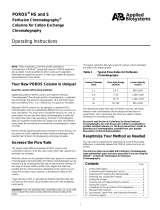 Thermo Fisher Scientific POROS® HS and S Perfusion Chromatography® Columns Operating instructions
Thermo Fisher Scientific POROS® HS and S Perfusion Chromatography® Columns Operating instructions
-
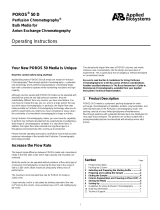 Thermo Fisher Scientific POROS® 50 D Perfusion Chromatography® Bulk Media Operating instructions
Thermo Fisher Scientific POROS® 50 D Perfusion Chromatography® Bulk Media Operating instructions
-
ESA Corona Plus CAD Operating And Maintenance Manual
-
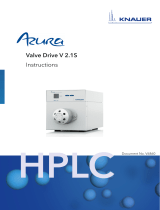 Knauer AZURA Valve Drive User manual
Knauer AZURA Valve Drive User manual
-
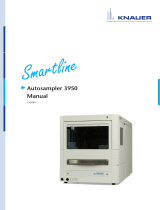 Knauer Smartline Autosampler 3950 User manual
Knauer Smartline Autosampler 3950 User manual
-
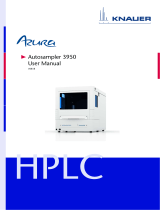 Knauer AZURA Autosampler 3950 User manual
Knauer AZURA Autosampler 3950 User manual
-
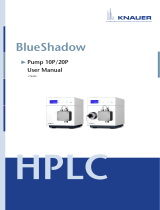 Knauer BlueShadow Pump 10P/20P User manual
Knauer BlueShadow Pump 10P/20P User manual
-
Waters nanoACQUITY UPLC Quick start guide











